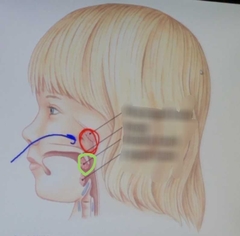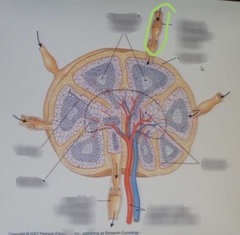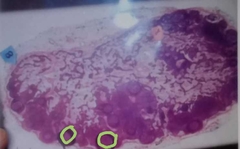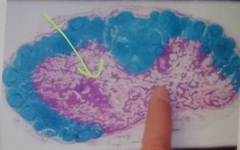![]()
![]()
![]()
Use LEFT and RIGHT arrow keys to navigate between flashcards;
Use UP and DOWN arrow keys to flip the card;
H to show hint;
A reads text to speech;
26 Cards in this Set
- Front
- Back
|
Thoracic duct |
Largest lymphatic vessel Runs parallel to the thoracic aorta Travels up and empties into left subclavian vein |
|
|
Lymphatic circulation |
1. Lymphatic Capillaries 2. Lymphatic collecting vessels 3. Lymphatic trunks 4 . Right lymphatic duct 5. Thoracic duct |
|

|
Lingual tonsils (paired) |
|

|
Palatine tonsils (paired) |
|

|
Pharyngeal tonsils (unpaired) |
|

|
Afferent vessels |
|

|
Efferent vessel |
|
|
Thymus |
Superior to heart Where T cells mature before they go to lymph nodes |
|

|
Nodules Clusters of B lymphocytes and T lymphocytes awaiting activation but foreign antigens |
|

|
Germinal centers Contains actively dividing B cells |
|
|
Spleen |
Lateral and posterior to stomach Filters toxins from blood |
|

|
Lymph node |
|

|
Lymphatic vessel |
|

|
Thoracic duct |
|

|
Axillary lymph nodes |
|

|
Lymph nodules |
|

|
Cortex of lymph node |
|

|
Medulla of lymph node |
|
|
Lymph nodes |
Filter pathogens, cellular debri, and cancer cells |
|
|
T Cells |
- 80% of all circulating lymphocytes - associated with cell mediated immunity |
|
|
B Cells |
Become plasma cells 15% of circulating lymphocytes Associated with antibody mediated immunity |
|
|
Plasma cells |
Secrete antibodies |
|
|
Antibodies |
Cause the agglutination of pathogens |
|
|
Functions of the lymphatic system |
Returns lymph to veinous blood flow |
|
|
R lymphatic duct |
Collects lymph from the R side of the head, neck, chest, arm, and hand |
|
|
Thoracic duct |
Collects lymph from the left side of the head, neck, chest, arm, hand, and all of the body below the diaphragm |

